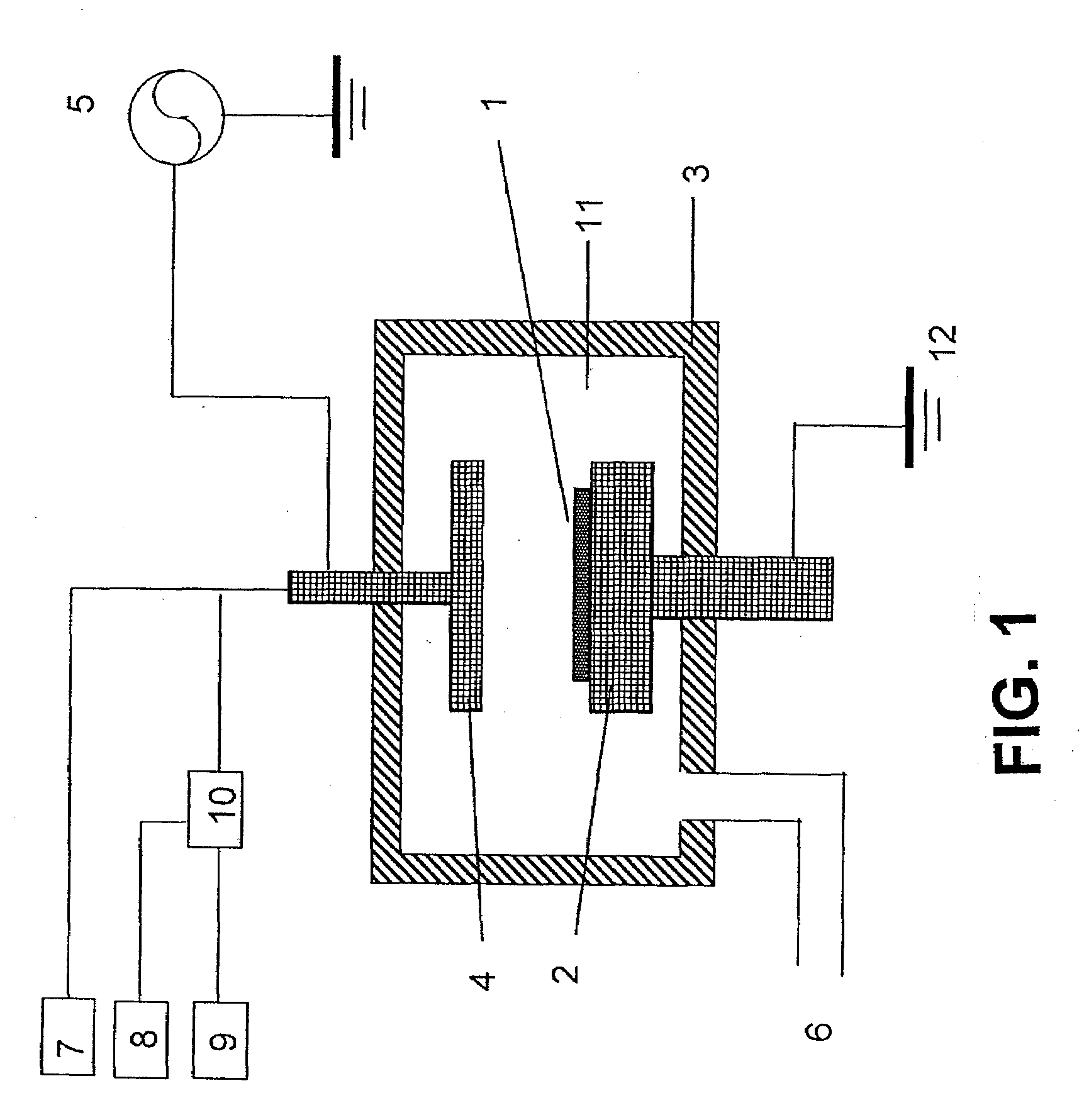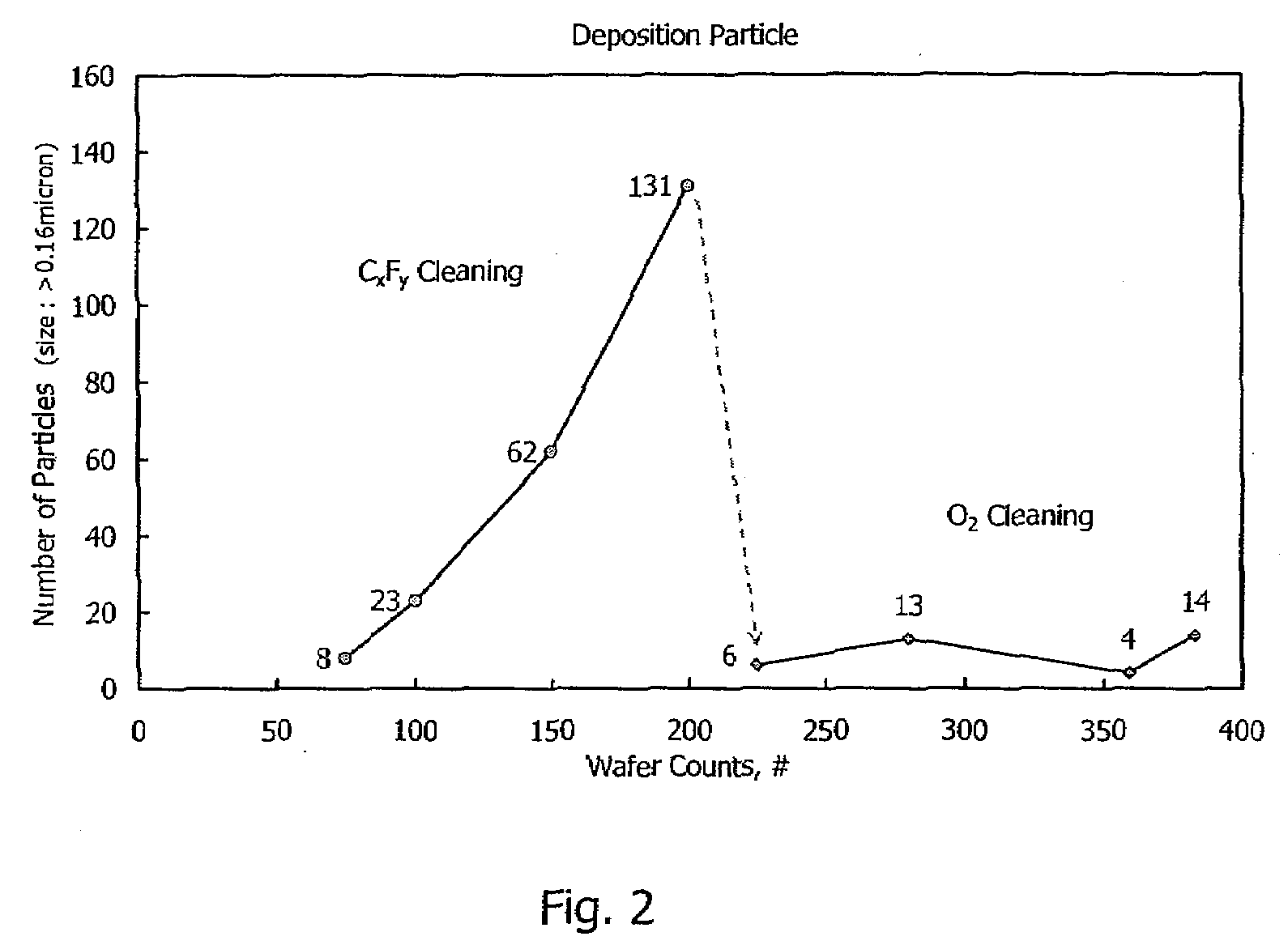Method of self-cleaning of carbon-based film
- Summary
- Abstract
- Description
- Claims
- Application Information
AI Technical Summary
Problems solved by technology
Method used
Image
Examples
example 1
[0081]As a cleaning gas, O2 gas was solely used. Cleaning conditions in this example and cleaning results are shown as follows. A cleaning rate (etching rate) was evaluated at a center of the upper electrode (showerhead) and an inner wall facing a gate valve.
[0082]Cleaning Conditions:
[0083]Gap between shower plate and susceptor: 25 mm
[0084]O2 gas: 3,000 sccm
[0085]RF Power (13.56 MHz): 1800 W
[0086]Pressure: 150 Pa
[0087]Cleaning time: 15 sec
[0088]Cleaning Rates:
[0089]Electrode: 460 nm / min
[0090]Wall: 320 nm / min
example 2
[0091]Under the same conditions as in Example 1 except for the pressure which was controlled at 533 Pa. A cleaning rate (etching rate) was evaluated at a center of the upper electrode (showerhead) and an inner wall facing a gate valve.
[0092]Cleaning Rates:
[0093]Electrode: 1150 nm / min
[0094]Wall: 50 nm / min
[0095]As shown above, by increasing the cleaning pressure from 150 Pa to 533 Pa, the cleaning rate at the electrode increased from 460 nm / min to 1150 nm / min which is 2.5-fold. On the other hand, the cleaning rate on the inner wall decreased from 320 nm / min to 50 nm / min which is less than 1 / 6-fold. By using O2 gas as the cleaning gas, the ratio of a cleaning rate at the electrode to a cleaning rate on the inner wall can highly be manipulated by changing the pressure. In the above examples, the ratio was changed from 2.5 to 1 / 6.
example 3
[0096]As a cleaning gas, N2O gas was solely used. Cleaning conditions in this example and cleaning results are shown as follows. A cleaning rate (etching rate) was evaluated at a center of the upper electrode (showerhead) and an inner wall facing a gate valve.
[0097]Cleaning Conditions:
[0098]Gap between shower plate and susceptor: 25 mm
[0099]N2O gas: 3,000 sccm
[0100]RF Power (13.56 MHz): 1800 W
[0101]Pressure: 150 Pa
[0102]Cleaning time: 15 sec
[0103]Cleaning Rates:
[0104]Electrode: 1770 nm / min
[0105]Wall: 1580 nm / min
PUM
| Property | Measurement | Unit |
|---|---|---|
| Temperature | aaaaa | aaaaa |
| Temperature | aaaaa | aaaaa |
| Fraction | aaaaa | aaaaa |
Abstract
Description
Claims
Application Information
 Login to View More
Login to View More - R&D
- Intellectual Property
- Life Sciences
- Materials
- Tech Scout
- Unparalleled Data Quality
- Higher Quality Content
- 60% Fewer Hallucinations
Browse by: Latest US Patents, China's latest patents, Technical Efficacy Thesaurus, Application Domain, Technology Topic, Popular Technical Reports.
© 2025 PatSnap. All rights reserved.Legal|Privacy policy|Modern Slavery Act Transparency Statement|Sitemap|About US| Contact US: help@patsnap.com


